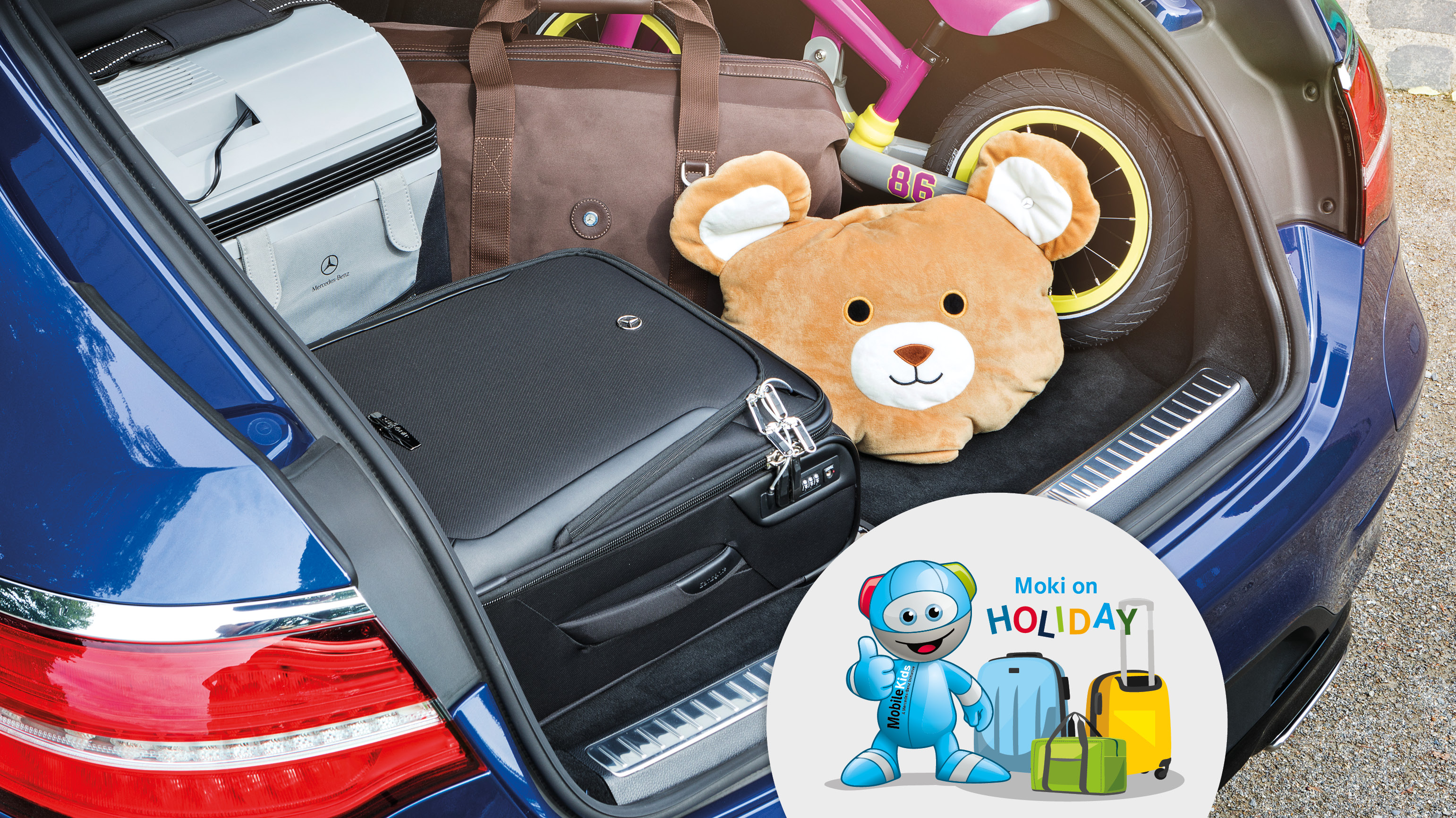A few days before they set off on their annual holiday, families start to get busy as the excitement builds. And the pile of luggage also grows as the days go on. While one family member insists on a fresh outfit for each day of the holiday, the bookworm packs piles of books into their suitcase, and the children gather beach toys and seek out every inflatable rubber animal that can be found in the cellar, garden or garage. Even if the family car is quite large, packing before departure is often like a game of Tetris. However, it's not just about getting everything on board, but above all about stowing it safely. MobileKids has five tips that everyone should consider and take to heart when packing.
1.) The right luggage
Even before the first items of beachwear go from the wardrobe into the holiday luggage, it's important to think about just what to take. This is because different types of luggage vary in their suitability for travelling by car. Soft travel bags, for example, can be stowed in the boot more efficiently than hard-sided suitcases, which are not flexible and may leave large gaps. Though of course these can also be filled with smaller bags or individual pairs of shoes. All in all, several individual pieces of luggage are more easily puzzled into the boot than a few large ones.
2.) Heavy items at the bottom
After packing, it's time to load the vehicle. Heavy luggage such as large suitcases and bags should be placed at very bottom of the boot and as close to the rear bench seat as possible, so that they cannot shift forward in the event of hard braking. The car should not simply be loaded up to the roof. If the pile of bags is higher than the backrest of the rear seats, it is essential to attach a luggage net so that no item of luggage can fly forward - although there is a downside to this: the view through the rear-view mirror can be restricted as a result. Before loading, you should consider which items you want or need to have quickly to hand, for example a safety vest, warning triangle and first-aid kit.
3.) Beware of airborne toys!
So all the luggage is safely and securely stowed in the rear, and the journey can begin. However, the passenger compartment should not be ignored either. Especially on long journeys, there are countless items that the occupants want to keep close at hand - water bottles, snacks, toys, mobile phones, tablets, keys or shoes. In addition, the boot may be so full that one or two bags have to ride in the front. In the latter case, the same rules apply as on a plane: stow them under the front seats if possible, but at least in the footwell. Even small items can become dangerous projectiles in the event of emergency braking. All such items should be stowed in the vehicle's stowage compartments or additionally installed seat organisers. If there is nobody on the rear seats, these can also be used for loading. Motoring organisations advise fastening the rear seat belts cross-wise to secure the load in such situations.
4.) Using the roof space
The car can not only be loaded inside, but also outside. For example with bicycles on suitable racks or a roof box to supplement the boot space. Here too, correct installation and loading takes time and care. Depending on the model, 50 to 75 kilograms can usually be loaded into a roof box. But take note: it's advisable to pack only lightweight items in the roof box, as the high centre of gravity can alter the car's handling characteristics. Whether on the roof or on a rear-mounted rack - when loading bicycles, individual parts such as air pumps, lights or e-bike batteries should be removed and the wheels properly tied down. Experts advise against using a tarpaulin, and recommend driving at a maximum of 120 km/h in view of the changed steering and braking behaviour. By the way: in Italy, Spain and Portugal, loads protruding from the rear, such as bicycles, must be marked with an appropriate warning sign.
5.) Take the weight into account
Once the car has been loaded full of excited anticipation in the form of luggage, there's one more thing that should not be forgotten: the tyre pressure. The correct tyre pressure depends on the vehicle load and the overall weight. According to experts, this can vary by up to one bar. If you are going on holiday with a full load, you should increase the tyre pressure accordingly. It's best to take a quick trip to a filling station before departure, and adjust it. The tyre pressure table for your vehicle can be found on a sticker in the fuel filler flap or door frame, and in the vehicle manual. The permissible total weight can also be found in the manual. This should not be exceeded, and not only because of the legal consequences - in Germany, for example, overloading can result in a fine of up to 235 euros - but also because overloading can have very severe effects on steering and braking behaviour.
Naturally all these rules and tips don't just apply to holiday journeys, but also in everyday life. Even the weekly shopping can become a hazard if bags and baskets are not properly stowed. So always allow a little more time for packing and loading.


